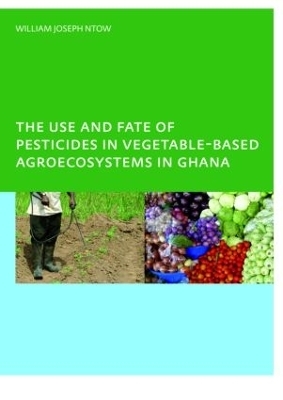
The Use and Fate of Pesticides in Vegetable-Based Agro-Ecosystems in Ghana
CRC Press (Verlag)
978-0-415-46274-7 (ISBN)
The Use and Fate of Pesticides in Vegetable-based Agro-ecosystems in Ghana reviews current knowledge on pesticides use in vegetable farming in Ghana and establishes the fate of pesticides in situ in tropical vegetable-based agro-ecosystems as well as their environmental and public health impacts on selected population groups. A field survey showed that vegetable farmers often spray pesticides on prophylactic basis due to lack of information. Although some farmers may be aware of pesticide hazards, adequate protection is hardly taken to minimize risks. About 70% of exposed farmers had a reduction of 30% or more in whole blood acetylcholinesterase activity. About 95% of the farmers interviewed reported symptoms attributable to pesticide exposure. Water, waterbed sediment, and vegetable crops were checked for residues of the pesticides monitored on the farmers’ fields. Residues detected in water and waterbed sediment indicated that these have come from runoff from vegetable fields and that the measured levels were transient. Pesticide residue levels detected in five vegetable crop types (tomato, cabbage, pepper, onion, and eggplants) were correlated to the minimal risk levels (MRLs) set by the United States Agency for Toxic Substances and Disease Registry (ATSDR). Mean intakes of residues by 22- to 75-year old adult farmers were found to be low and did not seem to be associated with health risk. Data on persistent pesticide residues in farmers’ breast milk and blood serum indicated the presence of DDTs, dieldrin, HCB, and HCHs. When daily intakes of DDTs and HCHs to infants through breastfeeding were estimated, some farmers accumulated these compounds in breast milk above the threshold for adverse effects, which raise concerns on children health. Evidence was found for persistence of isomers of endosulfan and its sulfate metabolite in tomato cropped soil and plant tissues. However, the residue concentration in tomato fruits decreased to a level below the Codex MRL given a two-week pre-harvest interval during which no application of the chemical is done. The publication concludes that successful action to reduce the negative impact of pesticides requires sustained, low cost, and well-targeted training interventions.
Students and scientists in the fields of environmental chemistry and/or science, farmers, agricultural extension officers and environmental and health regulatory agencies will find this book very useful.
William Joseph Ntow (1960) received his degree in Chemistry atthe University of Cape Coast, Ghana. He taught secondary school chemistry for four years and proceeded to The University of Science and Technology (Kwame Nkrumah University), Kumasi, Ghana in 1990 to pursue a two-year Master's programme in Environmental Chemistry. He worked at the Institue of Acquatic Biology (now Water Research Institue, WRI) of the Council for Scientific and Industrial Research (CSIR) and carried out research into various aspects of resources of inland, estuarine, lagoonal and the immediate coastal inshore water systems of Ghana covering water quality and pollution. He obtained a MSc at UNESCO-IHE in 1998 specialising in Water Quality Managament.
1. Farmer perceptions and pesticide use practices in vegetable production in Ghana; 2. Dissipation of endosulfan in field-grown tomato (Lycopersicon esculentum) and cropped soil at Akumadan; 3. The impact of agricultural runoff on the quality of two streams at Akumadan and Tono; 4. Occupational exposure to pesticides: blood cholinesterase activity in farmers at Akumadan; 5. Accumulation of persistent organochlorine contaminants in milk and blood serum of vegetable farmers; 6. Dietary exposure to pesticides from vegetables among adult farmers at Akumadan
| Erscheint lt. Verlag | 1.11.2008 |
|---|---|
| Zusatzinfo | 25 Tables, black and white; 2 Illustrations, color; 20 Illustrations, black and white |
| Verlagsort | London |
| Sprache | englisch |
| Maße | 178 x 254 mm |
| Gewicht | 226 g |
| Themenwelt | Weitere Fachgebiete ► Land- / Forstwirtschaft / Fischerei |
| ISBN-10 | 0-415-46274-6 / 0415462746 |
| ISBN-13 | 978-0-415-46274-7 / 9780415462747 |
| Zustand | Neuware |
| Haben Sie eine Frage zum Produkt? |
aus dem Bereich


